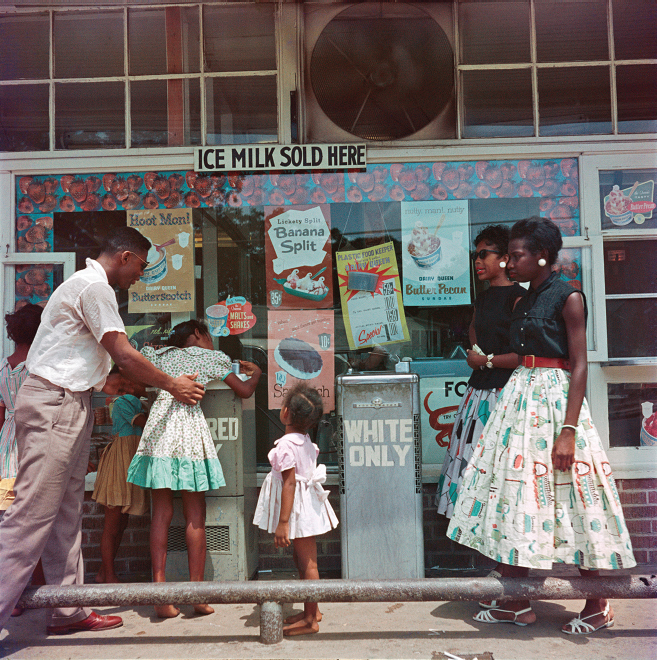America’s History: Printed Page 870
America: A Concise History: Printed Page 789
America’s History: Value Edition: Printed Page 770
Life Under Jim Crow
Racial segregation and economic exploitation defined the lives of the majority of African Americans in the postwar decades. Numbering 15 million in 1950, African Americans were approximately 10 percent of the U.S. population. In the South, however, they constituted between 30 and 50 percent of the population of several states, such as South Carolina and Mississippi. Segregation, commonly known as Jim Crow, prevailed in every aspect of life in the southern states, where two-thirds of all African Americans lived in 1950. African Americans could not eat in restaurants patronized by whites or use the same waiting rooms at bus stations. All forms of public transportation were rigidly segregated by custom or by law. Public parks and libraries were segregated. Even drinking fountains were labeled “White” and “Colored.”

This system of segregation underlay economic and political structures that further marginalized and disempowered black citizens. Virtually no African American could work for city or state government, and the best jobs in the private sector were reserved for whites. Black workers labored “in the back,” cleaning, cooking, stocking shelves, and loading trucks for the lowest wages. Rural African Americans labored in a sharecropping system that kept them stuck in poverty, often prevented them from obtaining an education, and offered virtually no avenue of escape. Politically, less than 20 percent of eligible black voters were allowed to vote, the result of poll taxes, literacy tests, intimidation, fraud, and the “white primary” (elections in which only whites could vote). This near-total disenfranchisement gave whites power disproportionate to their numbers — black people were one-third of the residents of Mississippi, South Carolina, and Georgia but had virtually no political voice in those states.
In the North, racial segregation in everyday life was less acute but equally tangible. Northern segregation took the form of a spatial system in which whites increasingly lived in suburbs or on the outskirts of cities, while African Americans were concentrated in declining downtown neighborhoods. The result was what many called ghettos: all-black districts characterized by high rents, low wages, and inadequate city services. Employment discrimination and lack of adequate training left many African Americans without any means of support. Few jobs other than the most menial were open to African Americans; journalists, accountants, engineers, and other highly educated men from all-black colleges and universities often labored as railroad porters or cooks because jobs commensurate with their skills remained for whites only. These conditions produced a self-perpetuating cycle that kept far too many black citizens trapped on the social margins.
To be certain, African Americans found greater freedom in the North and West than in the South. They could vote, participate in politics, and, at least after the early 1960s, enjoy equal access to public accommodations. But we err in thinking that racial segregation was only a southern problem or that poverty and racial discrimination were not also deeply entrenched in the North and West. In northern cities such as Detroit, Chicago, and Philadelphia, for instance, white home owners in the 1950s used various tactics — from police harassment to thrown bricks, burning crosses, bombs, and mob violence — to keep African Americans from living near them. Moreover, as we saw in Chapter 26, Federal Housing Administration (FHA) and bank redlining excluded African American home buyers from the all-white suburbs emerging around major cities. Racial segregation was a national, not regional, problem.